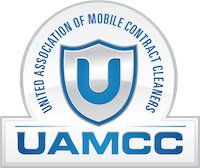Igor Zaric
UAMCC Board of Directors
Environmental extremism is about to hit San Diego in the pocketbook — and hard. The city expects to be on the hook for $4 billion over the next 17 years to scrub its urban runoff — a tab that dwarfs the city’s $2.3 billion unfunded pension liability and has city leaders scrambling over where to find the money.
The steep price tag underscores the ridiculousness of the sweeping new standards for storm water runoff adopted last May by the San Diego Regional Water Quality Control Board.
The new rules set harsh numeric limits on the amount of bacteria, chemicals and other pollution that will be allowed to run off into storm drains and, ultimately, the ocean. The permitted levels are on par with those in the undeveloped central California watershed and are impossible to achieve in an urban environment. As Cari Dale, Oceanside’s water utilities director, told the U-T San Diego, “Do we diaper the ducks? That’s how ridiculous these standards are getting.”
Indeed, washing a car in the driveway is strongly discouraged. Condensation from an air conditioner and excess pool water must be diverted to landscaped or other “pervious surfaces.” Even firefighters must watch where they aim their hoses.
At the time the rules were enacted, county supervisors pegged compliance costs for the San Diego region at $5.1 billion, $2.7 billion of which would hit the city. That figure didn’t take into account all the additional money residents and businesses would have to spend on new irrigation systems, cisterns to catch rainwater and fines if they don’t succeed.
State officials say their hands are tied by court rulings interpreting the federal Clean Water Act.
According to an October 2013 report by the city of San Diego’s independent budget analyst, rates for the storm water portion of residential and commercial water bills will have to rise 1,000 percent just to cover increased costs over five years.
The irony in all this is that strict pollution controls on sewage treatment plants and industry already have led to a 95 percent reduction in water pollution in California.
Sadly, that’s not the only impending hit to San Diegans’ pocketbooks. The Point Loma Wastewater Treatment Plant is the last, big sewage-processing facility in the country that doesn’t meet federal secondary-treatment standards. Upgrading the plant would cost up to $2 billion. After 20 years of securing waivers that have exempted San Diego from upgrading the facility, the city may not get another reprieve when its current permit expires in 2015.
And then there’s the $900 million or more that’s needed for infrastructure repair, money that may come from a bond measure — also known as a future tax hike.
Somebody needs to stop the madness, starting with the urban runoff regulations.
The steep price tag underscores the ridiculousness of the sweeping new standards for storm water runoff adopted last May by the San Diego Regional Water Quality Control Board.
The new rules set harsh numeric limits on the amount of bacteria, chemicals and other pollution that will be allowed to run off into storm drains and, ultimately, the ocean. The permitted levels are on par with those in the undeveloped central California watershed and are impossible to achieve in an urban environment. As Cari Dale, Oceanside’s water utilities director, told the U-T San Diego, “Do we diaper the ducks? That’s how ridiculous these standards are getting.”
Indeed, washing a car in the driveway is strongly discouraged. Condensation from an air conditioner and excess pool water must be diverted to landscaped or other “pervious surfaces.” Even firefighters must watch where they aim their hoses.
At the time the rules were enacted, county supervisors pegged compliance costs for the San Diego region at $5.1 billion, $2.7 billion of which would hit the city. That figure didn’t take into account all the additional money residents and businesses would have to spend on new irrigation systems, cisterns to catch rainwater and fines if they don’t succeed.
State officials say their hands are tied by court rulings interpreting the federal Clean Water Act.
According to an October 2013 report by the city of San Diego’s independent budget analyst, rates for the storm water portion of residential and commercial water bills will have to rise 1,000 percent just to cover increased costs over five years.
The irony in all this is that strict pollution controls on sewage treatment plants and industry already have led to a 95 percent reduction in water pollution in California.
Sadly, that’s not the only impending hit to San Diegans’ pocketbooks. The Point Loma Wastewater Treatment Plant is the last, big sewage-processing facility in the country that doesn’t meet federal secondary-treatment standards. Upgrading the plant would cost up to $2 billion. After 20 years of securing waivers that have exempted San Diego from upgrading the facility, the city may not get another reprieve when its current permit expires in 2015.
And then there’s the $900 million or more that’s needed for infrastructure repair, money that may come from a bond measure — also known as a future tax hike.
Somebody needs to stop the madness, starting with the urban runoff regulations.
